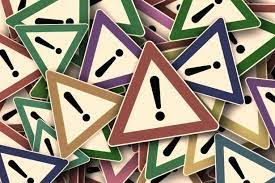"solution for kitchen cleaning"
Keeping the kitchen clean is essential for maintaining a healthy and hygienic living space. However, cleaning the kitchen can be a daunting task, especially if you don't have the right tools and techniques. In this blog, we'll explore some simple solutions for kitchen cleaning, backed up by numbers.
Use hot water and soap: According to a study by the USDA, using hot water and soap is an effective way to remove bacteria and other harmful microorganisms from kitchen surfaces. So, before you start cleaning your kitchen, fill a bucket with hot water and add a few drops of dish soap.
Invest in a quality microfiber cloth: Microfiber cloths are more effective at removing dirt and grime than traditional cotton cloths. Plus, they are reusable and can be washed in the washing machine. According to a study by the EPA, using microfiber cloths can reduce surface bacteria by 99%.
Don't forget the cutting board: Cutting boards can harbor harmful bacteria if not cleaned properly. To sanitize your cutting board, wash it with hot, soapy water, then spray it with a solution of one tablespoon of bleach to one gallon of water. Let the solution sit on the cutting board for a few minutes, then rinse with hot water.
Clean your sponge: Sponges can also harbor bacteria, so it's important to clean them regularly. According to a study by the USDA, microwaving a wet sponge for one minute can kill up to 99% of bacteria. Alternatively, you can soak the sponge in a solution of one part bleach to nine parts water for five minutes.
Use baking soda and vinegar: Baking soda and vinegar are natural cleaning agents that can be used to clean many surfaces in the kitchen. According to a study by the American Chemical Society, a mixture of baking soda and vinegar is more effective at removing dirt and grime than commercial cleaning products.
In conclusion, cleaning your kitchen doesn't have to be a difficult or time-consuming task. By following these simple solutions backed up by numbers, you can keep your kitchen clean and hygienic without breaking a sweat.
for write blog post or any article : shaheen rathore karachi
Use hot water and soap: According to a study by the USDA, using hot water and soap is an effective way to remove bacteria and other harmful microorganisms from kitchen surfaces. So, before you start cleaning your kitchen, fill a bucket with hot water and add a few drops of dish soap.
Invest in a quality microfiber cloth: Microfiber cloths are more effective at removing dirt and grime than traditional cotton cloths. Plus, they are reusable and can be washed in the washing machine. According to a study by the EPA, using microfiber cloths can reduce surface bacteria by 99%.
Don't forget the cutting board: Cutting boards can harbor harmful bacteria if not cleaned properly. To sanitize your cutting board, wash it with hot, soapy water, then spray it with a solution of one tablespoon of bleach to one gallon of water. Let the solution sit on the cutting board for a few minutes, then rinse with hot water.
Clean your sponge: Sponges can also harbor bacteria, so it's important to clean them regularly. According to a study by the USDA, microwaving a wet sponge for one minute can kill up to 99% of bacteria. Alternatively, you can soak the sponge in a solution of one part bleach to nine parts water for five minutes.
Use baking soda and vinegar: Baking soda and vinegar are natural cleaning agents that can be used to clean many surfaces in the kitchen. According to a study by the American Chemical Society, a mixture of baking soda and vinegar is more effective at removing dirt and grime than commercial cleaning products.
